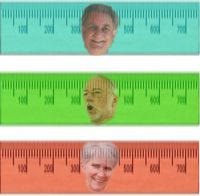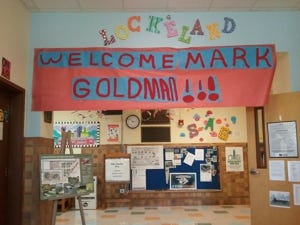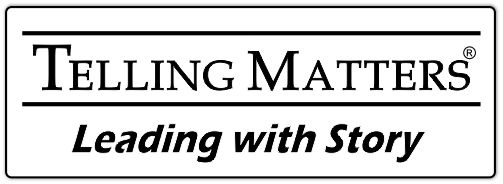Across the Aisle — Not So Much
Since the establishment of both houses of Congress, it has been the norm to have a seating chart similar to the graphic above. Democrats would sit on one side of the “aisle” and Republicans would sit on the other side; all grouped with their “own kind”. Thus came the term, “Reaching across the aisle.” An invitation. An attempt to draw in those from the “other” side to join them in a mutually beneficial “bi-partisan” proposal. It hasn’t worked so well!
I have a simple proposal that might help.
History (and Social Science) has proven that the “Birds of a feather flock together” mentality has not worked for developing true community; whether that community be a city, state, country or our own Congress.
I propose we ELIMINATE THE AISLE. Let’s re-design the seating chart so that Democrats AND Republicans sit with each other in mixed groupings
I believe that this new “sociometry” will foster a greater respect and connection between all members congress. They will commiserate less with their political “buddies” and be forced to interact with their counterparts from the other party.
Could it be that simple? Who knows, we have never tried it in congress. It’s been going on in coed schools for years; with great success!
We don’t even need to build bridges. There would be no AISLE to cross, or even reach across. They would all be right next to each other. Such a concept!
©Mark Goldman 2018
Measuring Success
Recently, a colleague who is an incredible storyteller, composer, singer became fearful when she compared herself to her musical idol; wondering if she would ever be “that” good. So… I offer this important tip for all people, at any skill level, in any endeavor, who may compare themselves to others.
 How do you measure success? Part of the answer lies in a secondary question: “Who or what is your measuring stick?
How do you measure success? Part of the answer lies in a secondary question: “Who or what is your measuring stick?
In life, it’s natural to measure ourselves against the accomplishments of others. It’s a competitive world out there, and winning, being first or the best is what we are taught to strive for. As a young child in school, I could never measure up to my older sister who got straight “A”s, but the teachers expected me to “be the same” as her. Just as I could never be my sister. I can never be any of the great storytellers I have experienced.
In storytelling, it’s difficult to not compare ourselves to other tellers. It’s important for us to know, hear and observe other tellers, especially the professionals who have come before us. But judging ourselves based on other tellers’ abilities is a dangerous and slippery slope.
 A couple of years ago, I made some contacts and was able to get booked for a day of telling at an elementary school in Nashville, just a few days before the Jonesborough Festival. I was excited! I arrived a day early and took a tour of the school with the librarian, who had hired me. At right is what I saw as I walked into the building.
A couple of years ago, I made some contacts and was able to get booked for a day of telling at an elementary school in Nashville, just a few days before the Jonesborough Festival. I was excited! I arrived a day early and took a tour of the school with the librarian, who had hired me. At right is what I saw as I walked into the building.
While talking with many of the teachers, I learned that in the previous year, Connie Regan-Blake had visited, and two years earlier, Donald Davis had performed. My heart almost stopped beating. How could I measure up to those two giants of storytelling?
As I left the building that afternoon, a thousand questions and doubts went through my mind. What was I to do? I could NEVER measure up to what they had heard in the past two years. I could see the faces of Donald and Connie, looming in the clouds above, like Titans peering down on a mere mortal, the size of an ant. Then somehow (thankfully), I realized that the librarian, who had hired both Connie and Donald, had also hired ME. She had been to my website, seen my videos, and decided I would be a good fit. I didn’t have to be like the tellers who came before me. I just had to be like me.
Here’s another example. I am a cyclist, and my friend and storyteller Layne Gneiting is a cyclist. A few summers ago, success for him was riding 2000 miles of steep altitude climbs and rough terrain through four European countries in two months. This would not be success for me… this would be death! Success, for me, on a bicycle tour, is riding fifteen miles on flat roads to the next town, without falling off the bike, and finding a cheap campsite near a bakery that has great croissants!
Success is different for each person, and different for each situation they are in.
When I was younger, and much more agile, I taught dance. Each class began with a series of stretches. Bending and twisting to limber up the body. Some students could bend over and put the palms of their hands on the floor. Some could only touch their toes with the tips of their fingers. Some could barely touch their ankles. Students would often measure themselves against me. They would say, “I can’t stretch as far as you can.” My response would be, “You don’t have to. Just stretch as far as YOU can go… then go just a little bit more. That’s success!”
©Mark Goldman 2018
StoryWall — A Storyboard for Your Program
This method works well for business presentations!
Some time ago, a colleague asked me for help in planning out an entire storytelling program. I suggested that she write down each story she was contemplating on a sticky note and place them all on a wall so she could get a sense of what she had, and how they all connected to each other. Then, she could move them around and find the best sequence and “fit” for her event. Come to find out, I believe the idea was in good company.
That week, I drove up to Cave Creek, to visit with my long-time friend, Bob “Boze” Bell, Executive Editor of True West Magazine. Bob had spoken about True West’s “Wall”, a process they have begun using to assist them in decision making regarding the layout of the magazine. We’ve all done “storyboarding” to plot out the sequence of a single story. This is similar…but on a much larger scale.
The Magazine is published once a month, with anywhere from 96–136 pages. Previously, all staff members would gather around the computer and go through each page (or two-page spread) one at a time. They would make comments about what they liked or thought needed improvement, but they only saw each piece separately.
Things changed a few months ago. Their Publisher, Ken Amorosano suggested they put ALL the pages up on the wall in their conference room, 97 pages, all in succession. The result: “The whole is much larger than the sum of its parts.”
 Now, all staff members can view not only each story (and ad) individually, but they can see it in sequence, cover to cover. They can see the flow, how each story relates to the other; do the ads clash, or fight for attention with each other, or article content. They can look at colors, fonts, design and consistency throughout the entire magazine. “It’s changed the way we make decisions,” said Bell. “It has given us a whole new perspective on each issue and the publishing process.”
Now, all staff members can view not only each story (and ad) individually, but they can see it in sequence, cover to cover. They can see the flow, how each story relates to the other; do the ads clash, or fight for attention with each other, or article content. They can look at colors, fonts, design and consistency throughout the entire magazine. “It’s changed the way we make decisions,” said Bell. “It has given us a whole new perspective on each issue and the publishing process.”
On the way home, I began to think more about expanding on this process for storytelling, and for organizing a long program. My original thought and suggestion to my colleague was to merely write down the title of each story. If we are really conscientious about our work, we must ask ourselves: who is our audience; what do they want; what do we want/hope that they will feel at the end of each story; at the end of the program; what stories will best accomplish all of this…AND what is the sequence? This “StoryWall” concept might be just the ticket!
Then I remembered that long-time storyteller Sean Buvala had recently shared with me that he had gone to present a program in Canada several months ago. After arriving, and based on new information he had received, he became concerned that some material should be changed. So, that night, he used index card sized sticky notes on the wall to help make decisions about the content and order of his program. Guess I’m still in good company!
So, here are my thoughts on the structure of such a StoryWall:
Write down the following on a separate piece of paper or large sticky note (you can get big ones at the office supply store):
First, remember who your audience is! Businesses: are these employees; middle managers; clients? Make sure you know what they need? What is the message you want theme to remember?
One sticky note for each section:
- Story title
- Length of the story
- Genre of story — personal, fairytale, folktale, etc.
- Themes in the story — triumph, justice, love, danger, etc.
- Tenor of the story — is it loud, funny, sad, outrageous, introspective, etc.
- Emotions evoked in the story
- How does the story end?
- How does the story begin?
- The Theme, or the Most Important Thing in the story (Doug Lipman’s MIT)
Put all the pieces up on the wall and begin the process. Is there a theme to the sequence? How would each flow from one to the next; beginning/ending? Do you want three long stories in a row, or want to break up the time progression? Do you want to purposefully “shock” your audience by changing the tenor in a drastic way?
Play around with it a bit. You may need to try several different combinations and sequences. Walk away from the wall and do something else. Take your mind away from it for awhile. Then come back and see if you feel the same about the order.
Oh yes, one more thing. Once you have made a decision on the order and progression…PRACTICE IT!
©Mark Goldman 2018
Even in Business — Show Don’t Tell
Show, don’t tell. — But wait, there’s more…
 First, let me say that I believe, “There are exceptions to every rule, including this one!” I certainly believe that applies here.
First, let me say that I believe, “There are exceptions to every rule, including this one!” I certainly believe that applies here.
I think there are at least two parts to this caveat; the first (as Sean Buvala has stated and written about here) is about how the teller “shows” with aspects other than the words. This can be with gestures, facial expressions, body movement, pauses, breathing, etc. and other physical aspects of storytelling. Often, a glance or gesture can demonstrate to the audience what is happening without the words. One can pantomime opening the door slowly and cautiously, without actually having to “tell” the audience, “The princess slowly and cautiously opened the door.”
Using gestures, body, etc, in addition to the words can help emphasize what we are trying to communice. We can say, “The Princess smiled.” But in conjunction with these words, if we also physically smile, the audience experiences an enhanced image.
With this in mind, “Show, don’t tell.” actually turns into that old grade-school favorite, “Show AND Tell.” It’s not an either or, it’s both. This is certainly true for those tellers (I am one) who gravitate to the farther end of the spectrum between “Teller” and “Performer”.
Here’s another example: One can say, “It was three days later that the Princess realized her hair was falling out.” OR — one can take a long pause and breath to indicate the passage of time; THEN pull at your hair and show dismay on your face, as you look at imaginary strands in your hands and THEN say, “It was three days later that the Princess realized her hair was falling out.”
This brings me to the next phase of “Show, don’t tell,” that I call, “Show first, then tell.” (click here to see my short tip called “Wag First, Then Bark.”)
Let’s go back to the first example of smiling while you say that the Princess smiled. I believe there is even greater impact if one smiles before telling us that the Princess smiled. Sometimes this can be a “micro-second” before using the words, sometimes it can be a much longer smile, a pause, and then the words. Note again, “There are exceptions to every rule, including this one!” Making these choices is part of the crafting process, AND the “moment-to-moment” choices while performing a particular story, in a particular place, for a particular audience.
To sum up Part One of my thoughts, one uses the full array of gestures, facial and body expressions, etc., along with timing and breathing to: Show, don’t tell; Show and tell; Show first then tell.
Part 1.5 (just a side note here)
In creative writing, we are often taught that there are three ways to reveal what is going on to the reader:
- Narration
- Dialogue
- Action (this, necessitating the narrator describing the action)
- Narration: The Narrator says, “She was angry.”
- Dialogue: The character says, “How dare you steal my dress?”
- Action: The Narrator descrtibes the action: “Cordelia’s face was bright red. She waived her fist in her sister’s face. She could not contain the volcano that was about to erupt!
Part Two
This is what I believe to be the essence (in terms of words and language) regarding the “Show, don’t tell” construct.
Use words and language to show or reveal to us what is happening, vs. merely telling us.
The great playwright, Anton Chekov is credited with this quote:
“Don’t tell me the moon is shining. Show me the glint of light on the broken glass.”
(For those who may be interested, this is a translation and what appears to be an extrapolation of something Chekov wrote to his brother, an aspiring writer. Here is a link to some interesting research regarding the Chekov quote: http://quoteinvestigator.com/2013/07/30/moon-glint/)
In its simplest form, here is an example:
Telling — “The Princess smiled.”
Showing — “The corners of her mouth turned upward, and the sparkle in her eyes filled the room.”
As story tellers and story crafters, we must remember that all of the above are only different techniques. There are no magic formulas…only suggestions.
Master storyteller Donald Davis has said,
“Storytelling is the way we move important pictures from our head to someone else’s head…and you can never spend too much time describing the scene, if you want people to see your picture.”
What is the best way to do that? How much is enough? How much is too much? How much is too little? Do you need more; do you need less? What will work the best? Some of the answers come from the golden triangle of story-storyteller-audience.
The final answer, in the moment of telling, comes from the master storyteller known as YOU.
©Mark Goldman 2018
Embracing Rejection — A story:

When I got my first rejection, I jumped for joy. I was hoping for many more!
Let me clarify. At the time, I had submitted proposals to several storytelling conferences and festivals for the coming year. After waiting a few weeks, I got my first rejection:
“Thank you for your proposal. . .we had so many fine submissions. . .there are many factors that the selection committee must consider. . .we regret to inform you that your proposal was not accepted.”
I was reminded that years ago, I was selling big-dollar sponsorships for several conventions that our company was producing. I hated “cold calling.” I would get a sinking feeling in the pit of my stomach every time I picked up the phone, in fear that I would get a NO. Consequently, I was reluctant to make the calls and would put them off. A sales consultant came to the office to discuss the process and said,
“If you’re not getting NOs, you’re not making enough calls!”
I finally got it. It was a numbers game! I had to go through MANY calls with a NO in order to get to the few ones that said YES. I started seeing the NOs as a means to get to YES.
Many writers experience the same thing. Jack Canfield and Mark Victor Hansen got 123 rejections until they found a publisher for Chicken Soup for the Soul. And the rest, as they say, is history. But what if they had stopped after the first few rejections? What if they had stopped after 100 rejections?
It’s the same with storytellers, or any other business. The business side is an integral part of being a storyteller. We must sell ourselves. No one else will do it.
I must send out as many proposals as I can. . .
to get as many rejections as I can. . .
to eventually get to a YES.
SO, BRING ON THE REJECTIONS!
© Mark Goldman 2018
Six-Word Stories Bring Clarity and Focus to Businesses
Stantec, an architectural and engineering company has used this technique to share their company’s and employees’ stories. Thousands of employees were asked to share their six-word stories.




 How do you measure success? Part of the answer lies in a secondary question: “Who or what is your measuring stick?
How do you measure success? Part of the answer lies in a secondary question: “Who or what is your measuring stick? A couple of years ago, I made some contacts and was able to get booked for a day of telling at an elementary school in Nashville, just a few days before the Jonesborough Festival. I was excited! I arrived a day early and took a tour of the school with the librarian, who had hired me. At right is what I saw as I walked into the building.
A couple of years ago, I made some contacts and was able to get booked for a day of telling at an elementary school in Nashville, just a few days before the Jonesborough Festival. I was excited! I arrived a day early and took a tour of the school with the librarian, who had hired me. At right is what I saw as I walked into the building. Now, all staff members can view not only each story (and ad) individually, but they can see it in sequence, cover to cover. They can see the flow, how each story relates to the other; do the ads clash, or fight for attention with each other, or article content. They can look at colors, fonts, design and consistency throughout the entire magazine. “It’s changed the way we make decisions,” said Bell. “It has given us a whole new perspective on each issue and the publishing process.”
Now, all staff members can view not only each story (and ad) individually, but they can see it in sequence, cover to cover. They can see the flow, how each story relates to the other; do the ads clash, or fight for attention with each other, or article content. They can look at colors, fonts, design and consistency throughout the entire magazine. “It’s changed the way we make decisions,” said Bell. “It has given us a whole new perspective on each issue and the publishing process.” First, let me say that I believe, “There are exceptions to every rule, including this one!” I certainly believe that applies here.
First, let me say that I believe, “There are exceptions to every rule, including this one!” I certainly believe that applies here.
 Short stories for business help make connections with customers, colleagues and employees. Stories help us to literally see in our own mind the experiences of the storyteller. Stories in print, or even better, video stories with supplementary footage to engage the viewer make lasting impressions. Even greater clarity and focus can come from crafting a very short story. “How short?”, you ask? Try six words!
Short stories for business help make connections with customers, colleagues and employees. Stories help us to literally see in our own mind the experiences of the storyteller. Stories in print, or even better, video stories with supplementary footage to engage the viewer make lasting impressions. Even greater clarity and focus can come from crafting a very short story. “How short?”, you ask? Try six words!